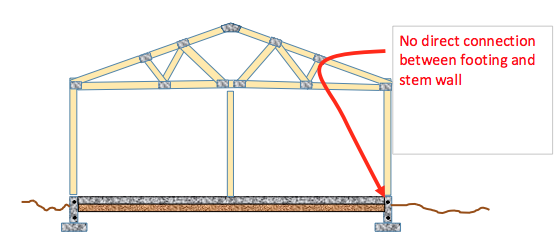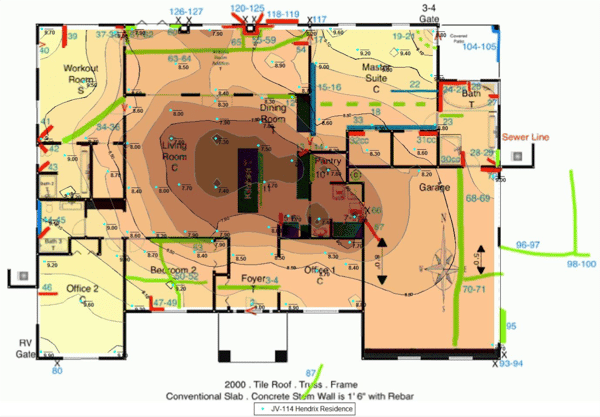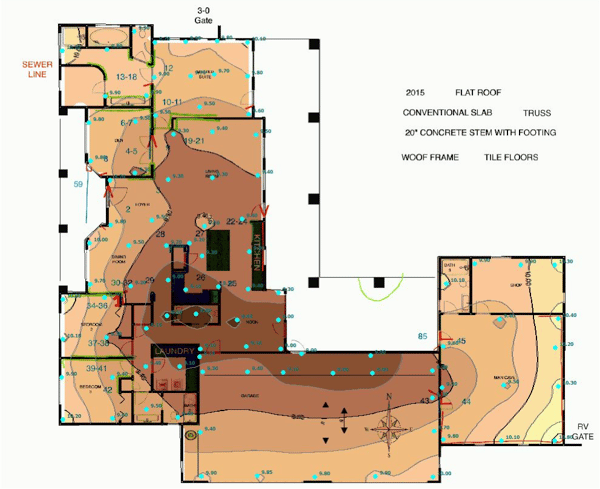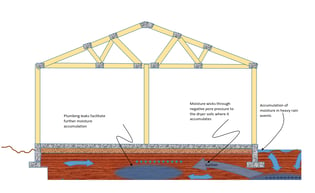Over the years, I have heard many objections to conducting a floor elevation survey with a manometer. Today, I would like this discuss a few of those and share critical information about these processes.
One objection that I heard the other day was that if a floor is covered in carpeting a manometer cannot be accurate. This is simply not true! Each measuring stick comes with a sharp point so that you can press down uniformly at each location. If there is a change in flooring such as pile or linoleum, simply read the difference between the two and make that adjustment.
Another common myth I hear is in conventional foundation systems that measuring the floor does not accurately show movement in footings. The reason that I often hear is because there is no direct connection between the floor slab and stem wall, they move independently from each other (see the illustration below). While I agree that this is possible in theory, in practice they move together almost always. Think about it… if the footing settles, it is going to create a void under the slab and the slab will follow.

Lately I have seen examples that perfectly illustrate that even with heave, both the footing and the stems move upward together! See:


The above examples are both conventional foundation systems (3 pour systems) and both are edge heaves with considerable damage. In both cases, the heave lifted the footing and stem with the floor slab. We could find no differential movement between the stem and slab. This clearly illustrates that even with edge heave, both the footings/stem walls and slabs move together.
Floor surveys are highly beneficial in diagnosing foundation movement. It is the reason that in both the Foundation Performance Association and Texas ASCE require a proper floor elevation as part of a level “B” investigation. See my previous post for a more detailed explanation of the levels of foundation investigations.






